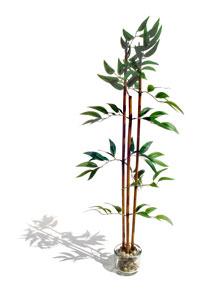Make your flowers and plants last longer with simple, expert tips. From fresh-cut bouquets to popular houseplants, this guide covers watering, light, temperature, and easy maintenance—so your gifts look great and thrive.
- Flower Arrangement Care
- General Plant Care
- Plant-by-Plant Tips
- Rose Color Meanings
- Flower Library (Names & Photos)
Flower Arrangement Care
Two of the most common questions we hear: “How do I take care of them?” and “How long will they last?” With a little extra care, most floral arrangements last 4–7 days, depending on flower type and environment. Use these tips to keep your flowers beautiful:
For vase or foam arrangements: Keep the vase filled (or the floral foam soaked) with water that includes the provided flower food. If the solution becomes cloudy, replace it completely. When possible, re-cut stems by removing 1–2 inches with a clean, sharp knife. Use warm water when topping off.
Placement matters: Keep flowers in a cool spot (around 65–72°F), out of direct sunlight, and away from heating/cooling vents, ceiling fans, or warm appliances (TVs, radiators), which can dehydrate blooms.
For boxed or loose-wrapped flowers: If you can’t place them into water right away, keep them in a cool place. Fill a clean vase with water, add the flower food (per packet directions), and place stems into the solution as soon as possible.
Trim & prep: Remove leaves that would sit below the waterline (they promote bacteria). Recut stems under warm water so they draw water (not air) before returning them to the vase. For woody stems (e.g., forsythia, quince, lilac), use sharp pruners.
General Plant Care
 A plant is a wonderful gift—many will last for years (and even propagate) with proper care. Not sure what you received? Use our plant identifier tool here: Plant & Flower Finder.
A plant is a wonderful gift—many will last for years (and even propagate) with proper care. Not sure what you received? Use our plant identifier tool here: Plant & Flower Finder.
Plant-by-Plant Tips
African Violets
Bloom anytime; thrive in bright, indirect light (or fluorescent). Keep soil evenly moist—avoid overwatering. Remove spent blooms. Feed monthly spring–fall with a low- or no-nitrogen fertilizer.
Areca Palms
Bright, indirect light; outdoors in filtered light during summer is fine. Ensure good drainage; never let sit in water. Mist fronds occasionally; feed monthly.
Azalea
Full sun with rich potting soil. Keep soil on the wet side. Feed every two weeks during the growing season and remove spent blooms.
Boston Fern
Ideal for hanging baskets. Bright, indirect light; rich soil; frequent warm misting. Keep soil barely moist and feed weekly during growth.
Bromeliads
Bright, indirect light indoors; rich soil; keep evenly moist. Feed lightly about every 6–8 months. Often bloom in spring/early summer.
Croton
Full sun; pinch to shape. Keep soil barely moist; feed every two weeks when young. Safety: Croton is poisonous if ingested; keep away from children and pets.
Cyclamen
Bright, indirect light; cool temps. Active winter–spring; dormant in summer. Stop watering in late spring, resume late summer. Keep soil evenly moist while in growth; feed biweekly. Safety: Cyclamen is poisonous if ingested.
Dieffenbachia
Bright, indirect light; let soil become moderately dry between waterings. Safety: Dieffenbachia (dumb cane) is toxic if ingested.
Dracaena
Easy-care in bright, indirect light. Keep soil evenly moist; brown tips may indicate underwatering. Feed every two weeks in growth periods.
Gardenia
Fragrant but finicky: bright, indirect light; rich soil; evenly moist; frequent warm misting; avoid drafts. Feed biweekly; prune in early spring.
Gerbera
Full sun. Ensure crown sits above soil; excellent drainage. Let soil become moderately dry between waterings. Feed every two weeks in growth.
Hydrangea
Full sun; rich soil; keep evenly moist. Prune back hard in early spring. Feed every two weeks during growth (acid-loving fertilizer if needed).
Ivy
Bright, indirect light; keep soil evenly moist; occasional warm mist. Feed biweekly during active growth.
Kalanchoe
Succulent; full sun indoors; general soil with added sand. Avoid wetting leaves; don’t overwater. Feed twice a year (April & July).
Norfolk Island Pine
Bright, indirect light; avoid overwatering. Rotate for symmetry; outdoors in bright light during summer is fine. Feed biweekly; skip winter feeding.
Orchid (most common types)
Bright, indirect light; avoid cold drafts. Many are potted in moss—keep evenly moist but never soggy. Feed every two weeks in spring/summer with orchid fertilizer.
Peace Lily
Bright light; away from drafts. Drench soil, then allow to become moderately dry before watering again. Feed every two weeks in summer.
Philodendron
Bright, indirect light; climber if supported. Keep soil barely moist; feed every two weeks in growth. Safety: Philodendron is toxic if ingested.
Pothos
Thrives in bright, indirect light but tolerates lower light. Keep soil evenly moist; provide drainage. Pinch to maintain shape; feed every two weeks.
Schefflera
Full sun indoors. Drench, then let soil become moderately dry between waterings. Feed monthly spring–summer.
Questions about care for a specific flower or plant? We’re happy to help—call (337) 233-4404 or contact us online.
More from Spedale’s: Rose Color Meanings | Flower Library





